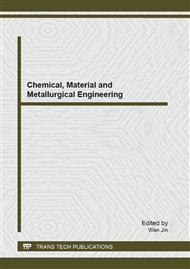p.374
p.380
p.385
p.390
p.394
p.400
p.406
p.411
p.416
Bending Properties of General Purpose Stainless Steel Wire Formed for Orthodontic Use
Abstract:
The archwire is generally used in fixed appliances for orthodontic treatment to correct dental malocclusion. However, it is interesting to know whether general purpose stainless steel wire could replace commercial orthodontic archwire in orthodontic practice for economic reasons. The purpose of this study was to determine the bending properties of general purpose stainless steel wire compared with commercial orthodontic stainless steel wires after forming as an archwire for orthodontic use. The samples used in this study were 90 general purpose and 45 commercial (Highland) round stainless steel wires in 0.016, 0.018, and 0.020 sizes (30 general purpose and 15 commercial wires for each size). All 15 general purpose stainless steel wires with different sizes were formed into orthodontic archwire with a Universal Testing Machine. All samples were tested (three-point bending test) for mechanical properties. The results showed no significant difference between general purpose and commercial orthodontic wires in size 0.016 for 0.1 mm offset bending force, 0.2% yield strength, and springback. Although many mechanical properties of general purpose wires differed from commercial wires, their values conformed to other previous studies within the range of clinical acceptance. In conclusion, orthodontic formed general purpose round stainless steel wires had statistically different (p <0.05) mechanical properties from commercial orthodontic stainless steel wires (Highland) but the mechanical properties were acceptable to use in orthodontic treatment.
Info:
Periodical:
Pages:
394-399
Citation:
Online since:
August 2013
Price:
Сopyright:
© 2013 Trans Tech Publications Ltd. All Rights Reserved
Share:
Citation:


